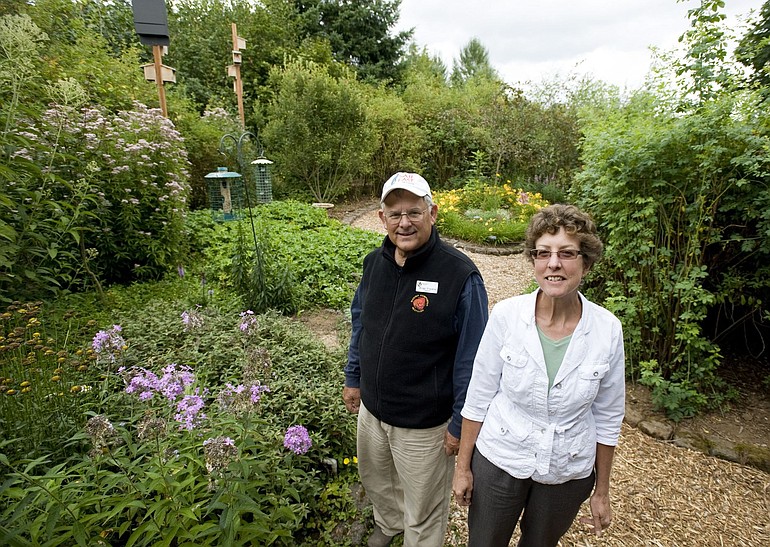Where: 11000 N.E. 149th St., Brush Prairie.
On the Web: Wildlife Botanical Garden.
BRUSH PRAIRIE — Years ago, Brigg Franklin stared down at a “miserable little garden” in the backyard of his Vancouver home.
He wanted to do something about it. So he got involved with the Wildlife Botanical Gardens — a 3-acre, 10-section complex in Brush Prairie built as an example of how to create a sanctuary for native plants or small wildlife. Franklin expanded his own skills as a key volunteer.
How’s that home garden now? Franklin laughs.
“It’s still miserable,” he said. “I spend all my time out here now.”
The garden represents a labor of love for the volunteers who put in hours of their own time each week maintaining it. Ten sections each hold a different collection of plants and flowers based on a certain theme, each kept up by a designated volunteer. One focuses on composting, complete with how-to brochures containing detailed information.
The effort has flourished by almost all accounts. But Botanical Wildlife Gardens remains largely a hidden gem, under the radar even on its home turf, according to organizers.
“People in Brush Prairie don’t even know we’re here,” said volunteer Meredith Hardin of Vancouver.
Still, volunteers often meet impressed visitors who discover the garden for the first time, Hardin said. NatureScaping of Southwest Washington, the nonprofit organization that founded and runs the garden, works with the Battle Ground School District, among other local partners, to create educational opportunities through organized events and programs.
The Wildlife Botanical Gardens started on what used to be an empty field on Northeast 149th Street, just off state Highway 503. It sprouted from the seed of grant funding and tree sales, fertilized by the dedication of enthusiastic organizers who launched it in the 1990s.
The effort originated from the city of Vancouver before the plot landed in Brush Prairie. One of the key forces then was Jeff Wittler, who owned a consulting business at the time. The garden broke ground on Earth Day in 1995, he said.
The area only included a few garden sections at first, Wittler said. He’s not directly involved with it anymore, but Wittler praised organizers who have come together from around the region to help the garden grow since.
“I think it’s great that you have all sorts of people with disparate backgrounds who are involved in that group,” said Wittler, now environmental resources manager for Clark Public Utilities. “I think those (gardens) are kind of great community unifiers.”
The organization’s board includes members from various parts of Vancouver and Clark County. Among its longest-serving members is group President Karyn Weber — “the glue that has held the group together,” Wittler said.
Brush Prairie’s gardens offer several examples for homeowners looking to transform their own yards. There’s the Hummingbird Place, built as a haven of flowers and feeders for the tiny birds. There’s the Native Woodland Garden, focusing on native plants of the Pacific Northwest. The Homestead Garden replicates what a pioneer family might do, Hardin said, and includes a selection of herbs and vegetables.
The complex holds at least two more empty plots yet to be developed, Hardin said. The garden remains a work in progress, with annual tree sales still raising money for the organization. Those happen each spring.
In the composting area, which Franklin maintains, the garden feeds itself. Franklin creates compost by simply taking in debris pruned from other sections of the garden. Once it’s ready, he gives the broken-down material back to other volunteers for use. As much as he can, at least.
“They provide us with more stuff than we can keep up with,” Franklin said. “And they ask for more compost than we can provide.”
One realm the garden hasn’t ventured much into is local food production, aside from the relatively small homestead section. That’s recently become a popular trend, and organizers may consider adding it to Brush Prairie in the future, Hardin said.
“We’re open to that,” Hardin said. “We’re open to whatever homeowners are interested in.”




